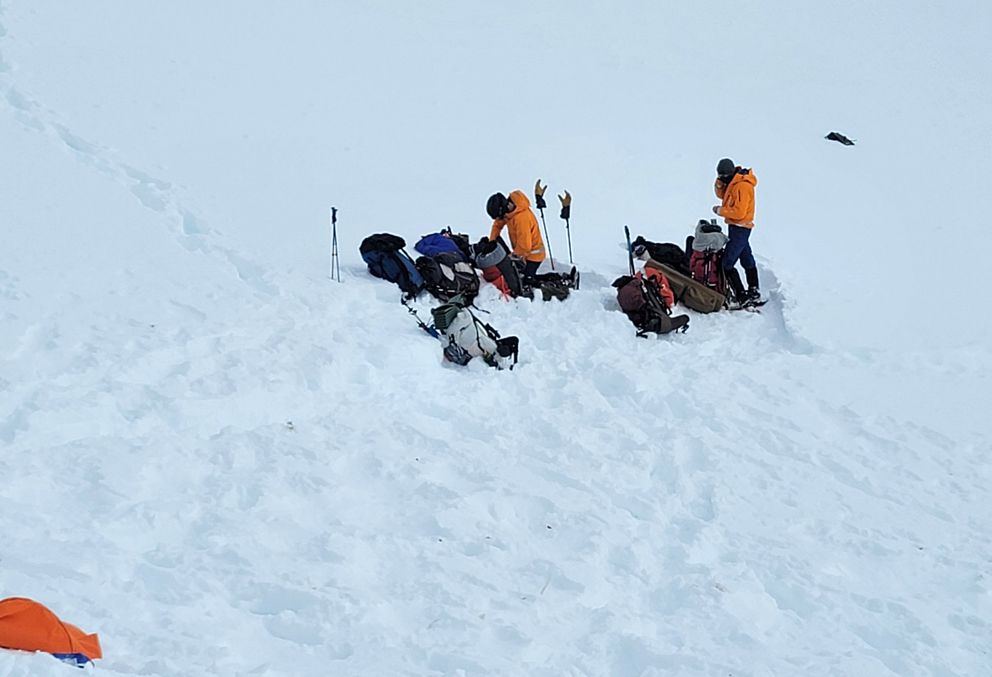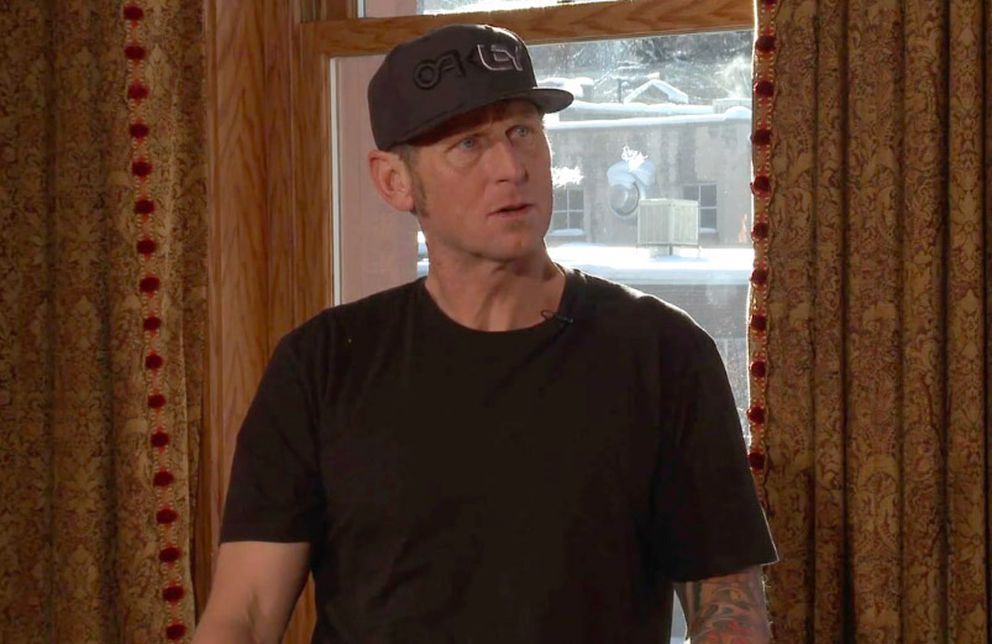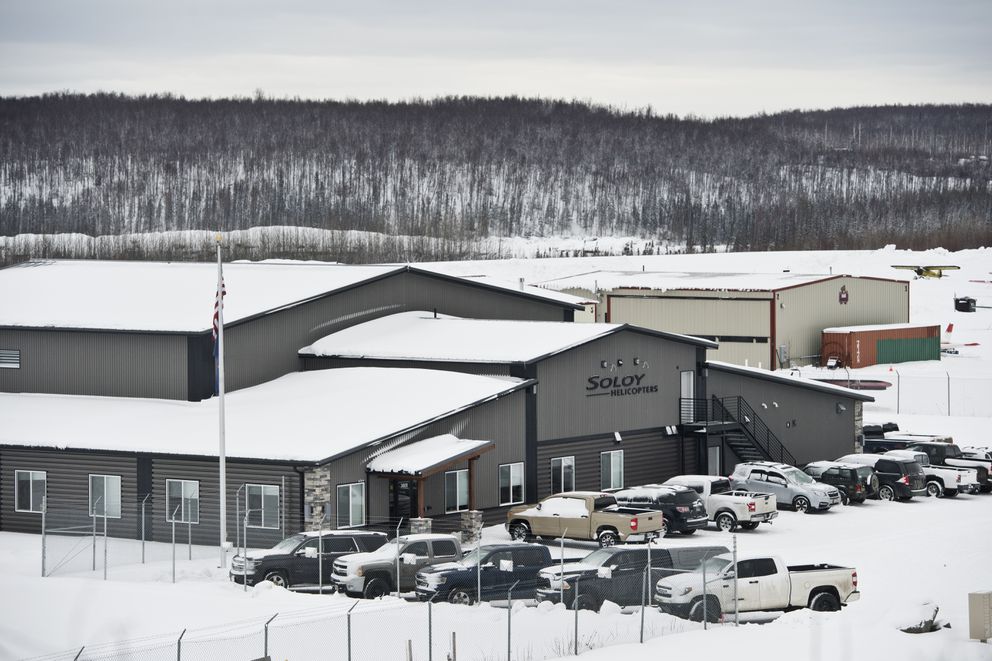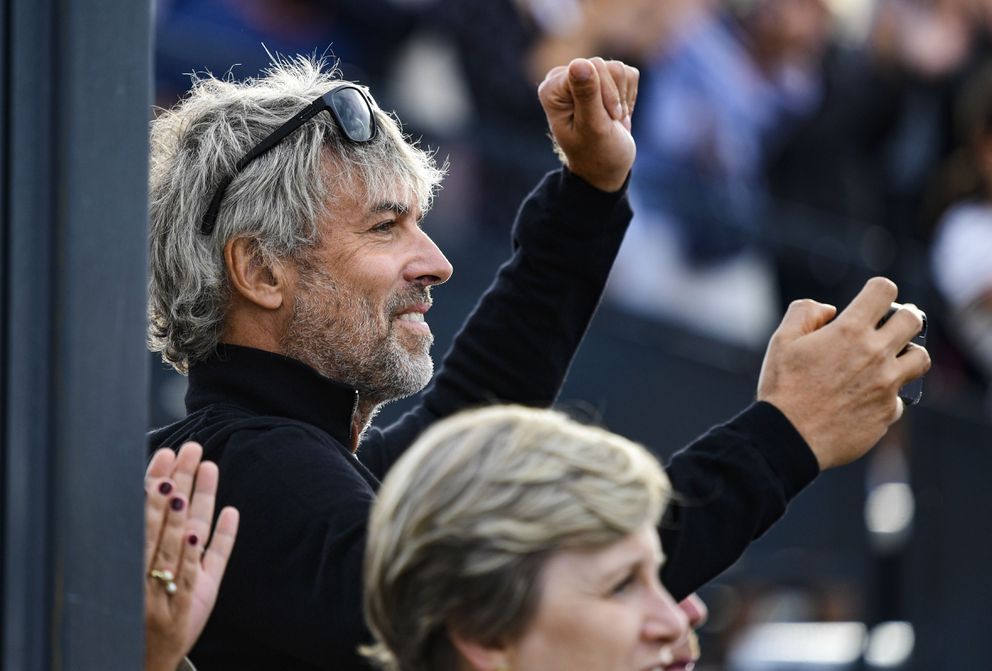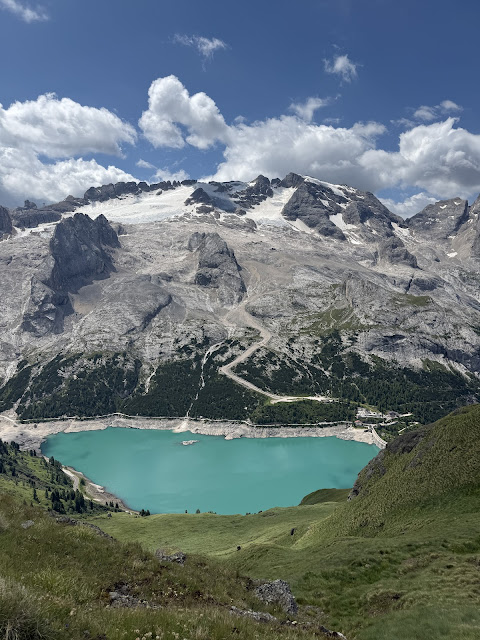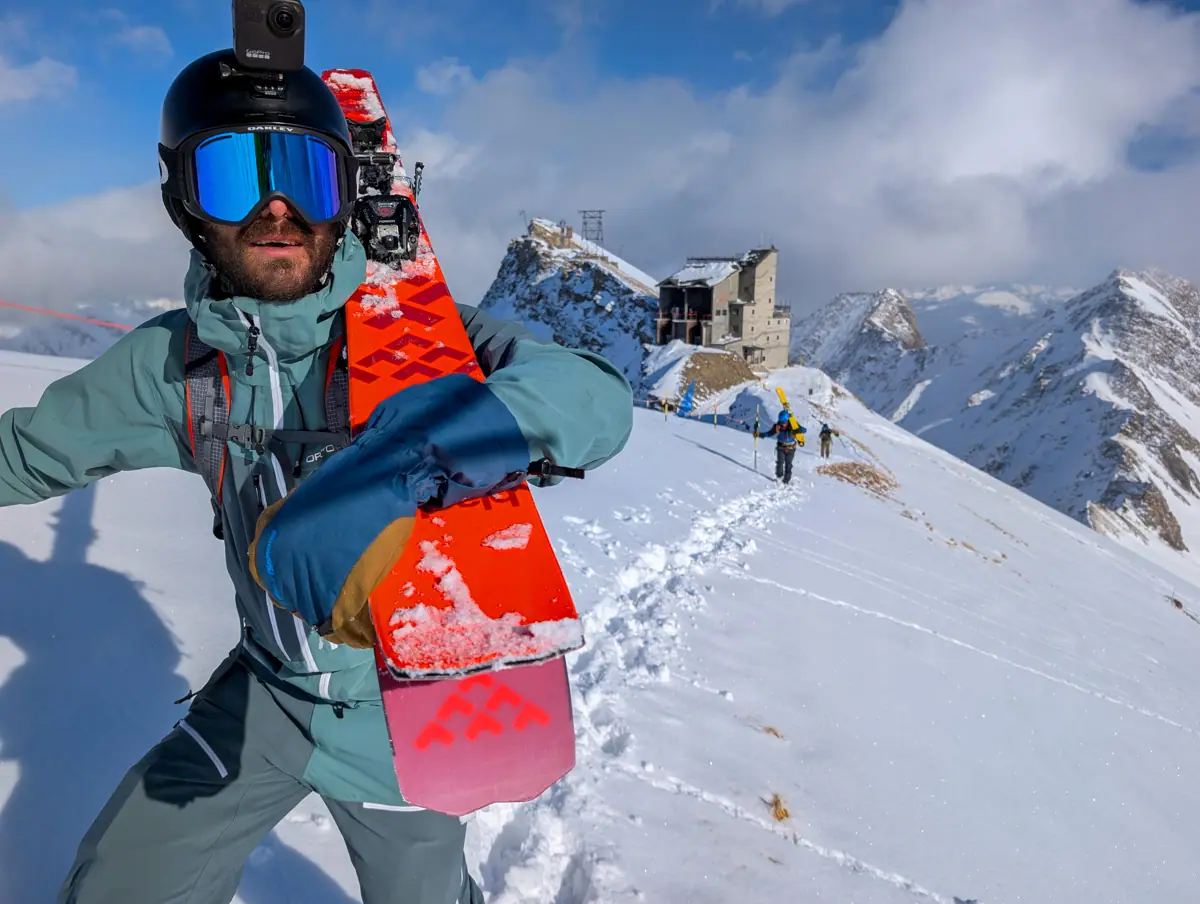Alex with a set of elk sheds. | Photo: Author
It could have been an old truck's exhaust backfiring, we didn't know. What it really sounded like was a gunshot, but we wouldn't admit that. We only saw one other vehicle in the area on the way in. It was already dark when we decided to spend the night at the rusty, abandoned windmill and cattle tank. We were on a piece of land we shouldn't have been on and we knew it. There was something about this patch of earth that spooked us; perhaps it was its remoteness or its lawlessness. Maybe it was the ancient peoples who used to live here and their stories of angry spirits. Maybe it was the gunshot. Either way, we pretended to forget about it.
We camped where three rivers met—where barren desert kissed lush, emerald mountains in a forlorn corner of Lincoln County in Southern New Mexico. But I didn’t see any running water. It was the night before a big shed hunt. As a member of the Mescalero Apache Tribe, Alex was an avid shed hunter, having hiked all over this landscape in the same way his ancestors did in search of antlers. Native Apaches have been hunting for sheds throughout the Southwest for centuries, long before the arrival of Europeans. Antlers from elk and deer were used in their culture mainly for the purpose of making tools and weapons, like spearpoints and knife handles. They were a high-quality product that played an important role for survival in everyday Native American life. Today, shed hunting is a fun, meaningful way to get outside and connect with the outdoors—and get paid for it.
On a good shed hunt, Alex would come back with a heavy, cumbersome load strapped to his pack. A successful search could yield dozens of antlers or more. Brown elk and mule deer antlers, or "brownies," as Alex called them, suggested that the animal had only recently dropped them, as they do each spring. These were the real prize, especially from elk, as they looked the prettiest and sold for the most, with Alex and other local shed hunters selling them to traders in the nearby mountain town of Ruidoso who have connections with luxury furniture makers, artisan jewelers, bladesmiths, dog chew producers, or anyone who sees a demand for antlers. They pay per pound: brownies go at a premium rate, which fluctuates depending on the current market, but shed hunters can usually get anywhere from fifteen to twenty-five dollars a pound for them. A large brownie from a mature bull elk could weigh up to 20 pounds or more. Half-browns sell for a little less, and then the chalky ones for the least, usually a handful of dollars per pound. The older the shed, the more sun-bleached, hollow, and chalky it is, and the less it weighs. These less desirable horns are usually turned into dog treats—but you could still get something for them. All antlers are good antlers. On this painfully warm July night at the windmill on a piece of tribal land that Alex said we “should” be ok to stay on since it technically belonged to him and his people, we set up sleeping arrangements, drank some aged tequila, and fended off swarms of ardent moths—but there was no campfire.
The next morning we woke up before dawn and this side of the mountains was still shaded from the rising sun behind them. A hasty breakfast and we started walking through sandy washes and desert shrubbery towards the mountains to our east. The flat earth gradually grew into rolling hills. Looking to the southwest from a small hill, we could see White Sands National Park in the distance and its unique sand dunes that are made entirely of gypsum, a mineral that is usually clear but appears white due to the way sunlight reflects off the tiny grains. The sun was soon on us and we could already feel its intensity early in the morning.
As the hills swelled larger the closer we got to the mountains, small junipers started springing up one by one until they got bigger and bigger and we were suddenly immersed in forest. The shade was comforting and we clung to it, stopping and glassing with Alex’s worn binoculars from cool vantage points for anything that stuck out amongst the greenish-brown vegetation. We trudged forward, going higher in elevation in the direction of the mountains. At the top of one sunny plateau, with desert below in one direction and mountains above in the other, I spotted the first shed of the day.
It was sitting in the shade between the trunks of two juniper trees. The moment my eyes scanned over an out-of-place tinge of white amongst the junipers was the same moment my body came to a halt. I knew what it was.
Once we got to the top of the plateau, our luck increased dramatically. | Photo: Author
I shouted back towards Alex, who was zigzagging the hillside below the crest of the plateau. He hurried over and we were both elated—it was the first antler I had ever found. It was a small elk horn with about six tines; it was old and chalky from the desert sun with a coarse, dusty feel to it—not a brownie but a shed nonetheless. We shared smiles and high-fives—the morning of grueling hiking had suddenly all become worth it. But we soon returned to mindfully sweeping the countryside for more of them, with no time to waste. It was getting hot—really hot. But not more than five minutes had passed when I found another one.
This antler was precariously positioned in the upper portion of a stubby juniper tree, which looked more like a bush. The shed was at shoulder level as I eagerly went over and plucked it from the branches. It was also old and chalky like the last one but bigger. A bull elk had been fiddling with the tree at some point, using the tree to rid itself of this annoying piece of bone that had outlived its purpose. The bull dislodged it in the tree branches and went elsewhere while the antler remained, frozen in time. Alex said he hadn't found a shed stuck in a tree like that before and so we laughed. It was not long after that when he had found a shed as well—a big, white eight-pointer that he immediately and quietly strapped to his pack. He carried on silently.
By lunchtime, our packs were already strapped tight with sheds—ten or so between the two of us. We found a nice, shaded spot beneath some juniper trees with a view of the desert floor below. We enjoyed sandwiches and a timeout from the heat. The sun was high in the sky and the temperature was likely in the triple digits already. We decided to start the long trek back to the car because we were over the heat and were already satisfied with our finds from the morning—me especially because I had found more sheds than Alex. But that moment of quiet gloating was short-lived.
 |
| By lunchtime, each of us had already found several elk and mule deer sheds. | Photo: Author |
We aimed towards a dry creek bed at the base of the plateau but quickly realized that we were up higher than we thought; the descent proved to be a steep, rocky, mountainous mess that took much longer than expected. The rocks were small and loose and you had to be careful not to lose your balance and tumble down the steep decline. To make matters worse, Alex told me that this type of country is the kind that black bears and mountain lions reside in and that we should keep our eyes open. New Mexico is a wild place to say the least.
We were miles away from the nearest road with no cell signal and backpacks full of sheds. At one point on the way down to the creek bed, Alex and I became separated. I yelled for him but heard nothing. Powerful, piercing sun rays beamed on me in the desert heat but I still couldn't help but get the chills.
Nearing the creek bed, I heard his booming voice coming from up and to the right of where I had just come from. I was washed with a wave of relief. I went over to him, where he was sitting below a large dead juniper tree next to a bull elk skull that still had its antlers attached. "Come look at this," he said.
The bull's skull had a copper bullet lodged in its forehead. Someone had shot this elk but left its skull and antlers behind. "Probably a poacher," Alex said, who had likely shot the animal and harvested its meat but not its horns so they wouldn't have been spotted leaving the area with something as noticeable as a fresh set of elk antlers.
It was a common-enough story in these parts. Many of the poachers in this corner of New Mexico were likely local and, in some cases, descendants of the Mescalero Apache themselves. It was an unfortunate truth—one that Alex never shied away from—that some families in the area lived under the weight of generational poverty, addiction, and a lack of opportunity. Alcoholism, petty crime, and a deep disconnect from both tribal leadership and mainstream society had taken root in places the government forgot long ago. Some hunted illegally not out of sport or malice, but out of hunger, desperation, or simple survival. Out here, there were no clean lines between right and wrong—only the realities of a hard life on unforgiving land.
 |
| Alex with the deadhead. | Photo: Author |
We carried on, following the dry creek as it snaked along the feet of towering plateaus, offering us much shade. It eventually dumped us out into a flat basin where other creeks met it. Was this one of the three rivers that gave the area its name? I wondered. It was here that Alex started finding shed after shed like he was in an orchard harvesting low-hanging chiles. He'd walk along, stop, bend over, pick one up, put it on his pack, keep walking, and repeat a similar process a hundred yards later. It hadn't been that long since I first took delight in the notion that I had found more sheds than Alex, whose pack was now clearly heavier than mine. He had it in his blood, after all, which I didn’t think was fair.
The closer we got to the vehicle, the flatter the ground got and the more sheds we started finding. We crossed sandy washes and flat bushy areas and they were everywhere, with Alex and I picking them up off the ground left and right. We recovered sheds all the way until the car and were surprised that we hadn't found them in the morning when we first set off.
 |
| "Not bad for a morning of hiking around in a pretty spot.” | Photo: Author |
It was early afternoon when we got back to my car; we were drenched in sweat, out of water, and thoroughly exhausted. But we were joyful about the day. Alex had found eleven sheds and I had found nine, including a set, which is a pair of antlers from the same elk. Finding sets isn't common because elk don't usually shed their antlers at the same time, so we were both excited when I got one. We snapped a couple of photos of our finds and enjoyed the desert scenery and far-off mountain views for a moment from the comfort of my car's AC. "Not bad for a morning of hiking around in a pretty spot," I told Alex. He agreed.
On the way out we passed by a petroglyph site. Ancient people had once lived in this seemingly uninhabitable land long ago and had left behind traces of their existence—stone inscriptions of their unique lives and culture for future onlookers like us to admire and ponder. A 2021 discovery by researchers in White Sands, less than 100 miles away to the southwest, found 20,000-year-old human footprints, challenging the assertion that no human being had been in North America before the Bering Land Bridge at the time of the last Ice Age. But they had been, right here in what is now New Mexico. Just down the road less than 100 miles in the other direction is the Trinity Site, where Oppenheimer and his team of scientists made history by detonating the first atomic bomb, propelling mankind into a new era in which it gained the power to annihilate itself. These were all things Alex and I discussed as we sailed back along the empty, dusty highway with weary grins on our faces and a trunk full of sheds.
Alex would pass away later that year in an accident at work, cutting trees in the very same forest he grew up in, just on the other side of the range where he and I went shed hunting in Lincoln County that hot summer day. He was 20. Like his ancestors, he lived and died on this land that we had scoured in search for brown gold. When I walk through the mountains or the desert today, sweeping the pine-needle-covered ground for sheds, dissecting the sage bush shrubbery for a jammed-in antler, a part of me still expects to turn and see Alex pop around the corner with a big brownie in his hand, smile stretching from ear to ear. I know one day I'll eventually have to go to where he is now, and it gives me a small sense of relief knowing that Alex is there already, still adventuring, finding the biggest sets we could ever imagine. I look forward to seeing you there one day, amigo—perhaps where the three rivers meet.
 | |
|









